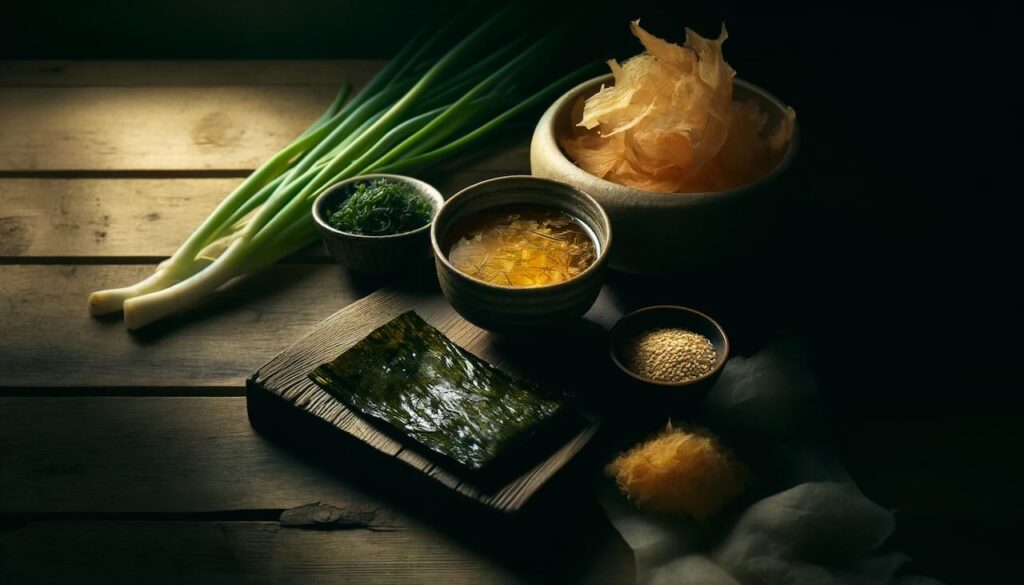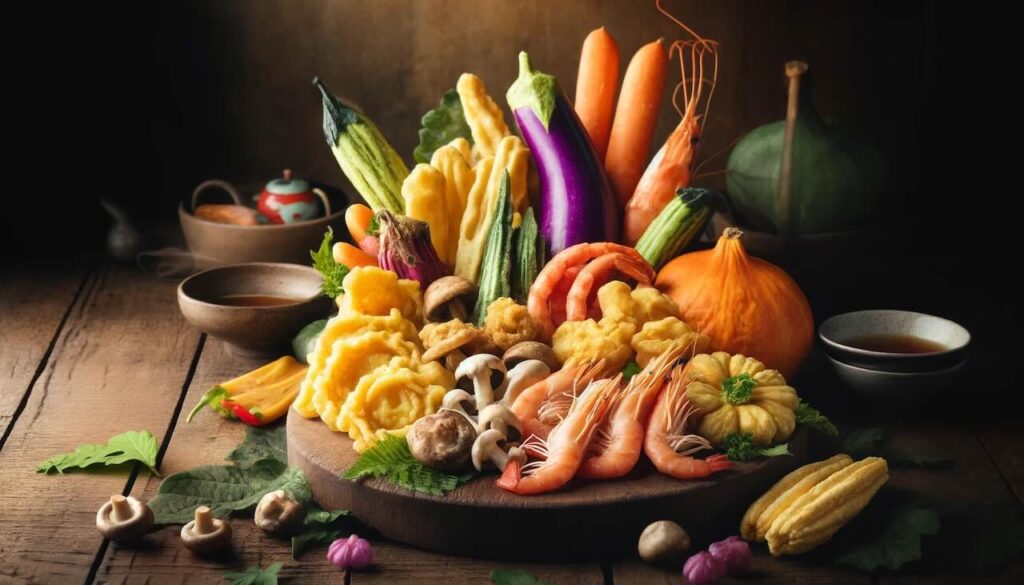In the world of Japanese cuisine, dashi holds a place of quiet power. While often hidden beneath the surface, this delicate broth is the foundation that gives Japanese food its signature depth, balance, and umami. Without dashi, many iconic dishes—from miso soup to udon noodles—would lose their essence.
In this article, we’ll explore what dashi is, how it’s made, its long history, and why it remains central to both traditional and modern Japanese cooking.
👉 If you’re interested in exploring more about Japan’s flavorful condiments, check out:
The Complete Guide to Japanese Condiments: Unlocking the Flavors Behind Japan’s Culinary Mastery
What Is Dashi?
At its core, dashi (出汁) is a simple broth made by steeping naturally rich ingredients in water to extract their essence. What makes dashi unique compared to Western stocks or broths is its lightness, speed of preparation, and concentrated umami — the so-called “fifth taste.”
The most common dashi varieties are:
| Type of Dashi | Main Ingredients | Flavor Notes |
|---|---|---|
| Kombu Dashi | Dried kelp (kombu) | Clean, oceanic umami with slight sweetness |
| Katsuobushi Dashi | Dried, shaved bonito flakes | Smoky, savory, deeply umami |
| Awase Dashi | Kombu + Katsuobushi (blended) | Balanced, multi-layered, most common |
| Niboshi Dashi | Dried baby sardines | Briny, full-bodied, often used for ramen |
| Shiitake Dashi | Dried shiitake mushrooms | Earthy, vegetarian umami alternative |
These natural ingredients are rich in glutamates and nucleotides, the chemical compounds responsible for umami — that elusive savory sensation that defines much of Japanese flavor.
How to Make Dashi: Simple, Yet Sophisticated
Unlike long-simmered Western stocks, dashi is quick to prepare. The process highlights the Japanese philosophy of minimalism and ingredient respect.
Basic Awase Dashi Recipe:
Ingredients:
- 20g kombu (dried kelp)
- 20g katsuobushi (bonito flakes)
- 1 liter water
Instructions:
- Soak kombu in cold water for 30 minutes.
- Slowly heat the kombu water until just before boiling. Remove kombu.
- Add katsuobushi and simmer briefly.
- Turn off heat. Allow katsuobushi to settle, then strain.
This first extraction is called ichiban dashi (first dashi) and is prized for its clarity and rich umami. A second, lighter broth (niban dashi) can be made by reusing the same ingredients.
A Thousand-Year History of Dashi
Dashi’s story stretches back to Japan’s ancient periods:
- Nara period (8th century): Early forms of kombu dashi appear.
- Kamakura period (12th century): Katsuobushi (dried bonito) begins to supplement kombu.
- Edo period (17th century): The rise of awase dashi (kombu + katsuobushi blend), solidifying dashi’s role as the soul of Japanese cooking.
- Modern era: Innovations like instant dashi powder make it globally accessible while preserving traditional methods in high-end kitchens.
While the ingredients remained humble, the refinement of dashi became a form of culinary art, embodying Japan’s values of harmony, simplicity, and seasonal sensitivity.
Why Is Dashi So Essential in Japanese Cuisine?
Dashi performs multiple critical functions:
- Umami delivery: It brings a deep, satisfying savoriness without heaviness.
- Flavor enhancer: Complements rather than overpowers ingredients.
- Digestive lightness: Allows delicate seasonal flavors to shine.
- Culinary versatility: Forms the base for countless Japanese dishes.
Common Dashi-Based Dishes:
- Miso soup
- Udon and soba noodle broths
👉 See: The Complete Guide to Soba: Japan’s Ancient Buckwheat Noodle Tradition - Chawanmushi (steamed egg custard)
- Nimono (simmered vegetables and fish)
- Hot pot (nabe)
- Ochazuke (rice with tea and dashi poured over)
Without dashi, much of Japanese cuisine’s subtle harmony would be lost.
Is Dashi Unique to Japan?
While other world cuisines use broths and stocks, nothing parallels dashi’s minimal extraction method and clarity of umami. Western stocks build flavor through long simmering of bones, vegetables, and herbs. Dashi, by contrast, achieves its depth in minutes.
As Japanese cuisine spreads worldwide, many non-Japanese chefs have embraced dashi — not as a substitute, but as an entirely new flavor-building tool. Globally, it is simply called “dashi”, reflecting its unique identity.
Dashi’s Global Rise and Cultural Significance
The spread of dashi parallels Japan’s increasing culinary influence. Chefs worldwide now incorporate dashi in fusion dishes, vegan broths, and even French sauces.
But at its heart, dashi remains a cultural symbol of:
- Seasonality (shun) — Respecting ingredient peak flavors.
- Simplicity (wabi-sabi) — Honoring restraint and balance.
- Craftsmanship (shokunin spirit) — Mastering subtle techniques.
- Healthfulness — Providing nourishment without heaviness.
As with many Japanese condiments — whether Shichimi Togarashi, Yuzu Kosho, or Wasabi — dashi reflects a deep respect for nature’s flavors.
Conclusion: The Invisible Star of Japanese Cuisine
Dashi is not just broth — it’s the soul of Japanese cooking. With its light yet powerful umami, quick preparation, and cultural depth, dashi continues to shape both home cooking and fine dining across Japan and beyond.
By learning the secrets of dashi, even simple meals take on new meaning — infused with centuries of wisdom, balance, and quiet culinary perfection.


